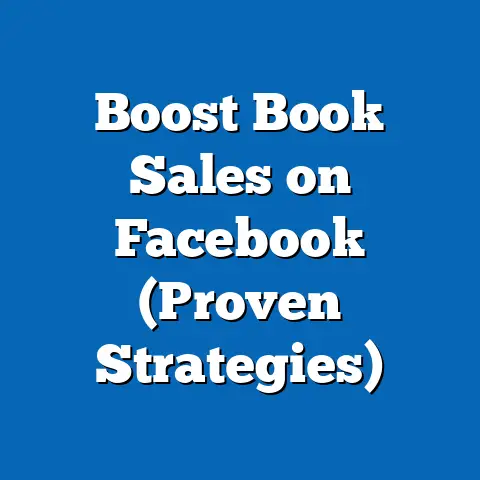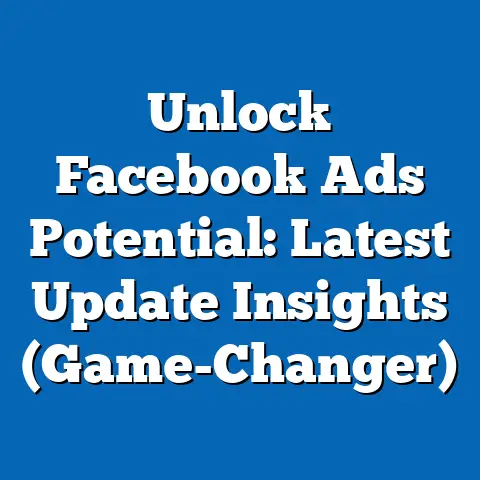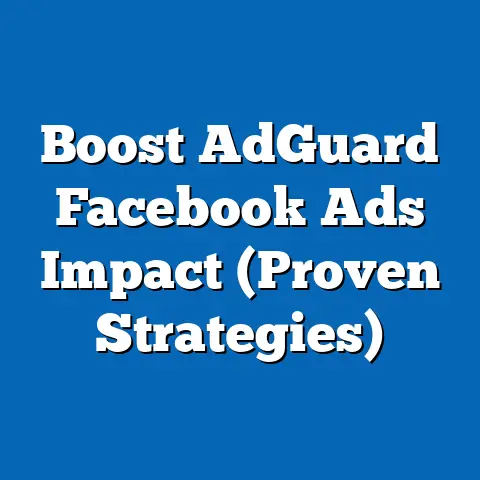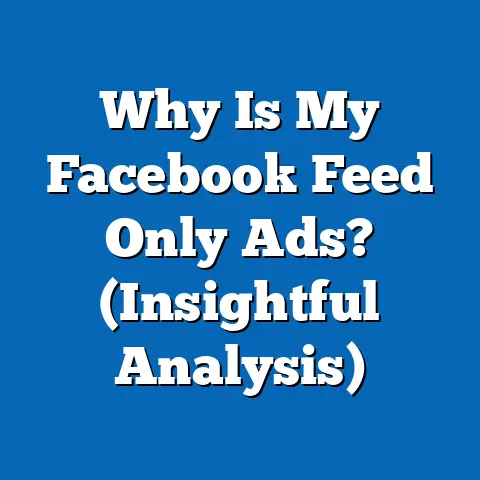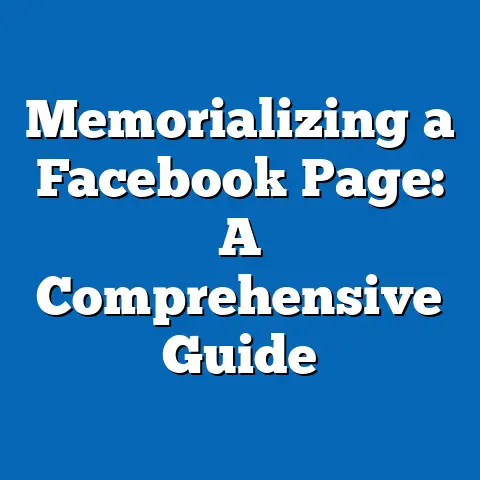Boosting vs. Facebook Ads: Which Drives Real Results? (Essential Guide)
In the rapidly evolving landscape of digital marketing, businesses and individuals are constantly seeking the most effective strategies to maximize their online presence and drive tangible results. Among the myriad of tools available, two options stand out on the Meta platform: post boosting and Facebook Ads. While both aim to increase visibility and engagement, their mechanisms, targeting capabilities, and outcomes differ significantly—especially when considering metrics like resale value for businesses or products being promoted.
Understanding Resale Value in the Context of Digital Marketing
Resale value, typically associated with physical assets like cars or real estate, has taken on a new meaning in the digital age. In marketing, it refers to the long-term value or return generated from an investment in advertising—whether through sustained customer engagement, brand loyalty, or direct sales of promoted products. When evaluating boosting and Facebook Ads, resale value becomes a critical metric to assess whether the initial ad spend translates into lasting financial or reputational gains.
According to a 2022 report by eMarketer, digital ad spending in the U.S. alone reached $209.7 billion, with social media platforms like Facebook accounting for nearly 28% of that total. This highlights the immense potential for businesses to capitalize on platforms like Meta to drive resale value. However, not all advertising methods yield the same results, and understanding the impact on long-term value is essential.
A study by Nielsen in 2021 found that 64% of consumers are more likely to purchase a product after seeing it promoted on social media, with repeat purchases often driven by consistent brand visibility. This underscores the importance of choosing the right advertising tool to not only attract initial attention but also sustain customer interest over time, thereby boosting resale value.
Key Trends in Digital Advertising and Resale Value
Digital advertising has transformed dramatically over the past decade, with social media platforms becoming the cornerstone of modern marketing strategies. Historically, businesses relied heavily on traditional media like print and television, but by 2020, digital ad spend surpassed traditional media for the first time, according to Statista, reaching a global total of $378 billion. Within this shift, Meta platforms (Facebook and Instagram) emerged as leaders, capturing 21.5% of the global digital ad market share in 2022, per Insider Intelligence.
When it comes to resale value, trends show that consistent social media presence can increase brand equity by up to 23%, as reported by a 2021 BrandZ study. This equity often translates into higher customer lifetime value (CLV), a key component of resale value, as loyal customers are more likely to make repeat purchases or recommend a brand. Notably, businesses using targeted social media ads reported a 37% higher CLV compared to those using non-targeted methods, per a 2022 Harvard Business Review analysis.
Demographically, younger audiences—particularly Millennials and Gen Z—play a significant role in driving resale value through social media. A 2023 Pew Research Center survey found that 78% of 18-29-year-olds use Facebook, and 55% of them have made a purchase influenced by social media ads. This demographic’s propensity for online engagement suggests that advertising strategies tailored to their behaviors can significantly enhance long-term value.
Breaking Down Boosting: What It Is and How It Impacts Resale Value
What Is Post Boosting?
Boosting a post on Facebook is a quick and user-friendly way to increase the visibility of organic content. By allocating a budget (starting as low as $1 per day), users can promote a specific post to a broader audience beyond their existing followers. Boosting is often used to enhance engagement metrics like likes, comments, and shares, or to drive traffic to a website or event.
However, boosting offers limited customization in terms of targeting. Users can select basic parameters such as location, age, and interests, but the depth of segmentation is far less sophisticated than full-scale Facebook Ads. This simplicity can be both a strength and a limitation when considering resale value.
Impact on Resale Value
The impact of boosting on resale value is mixed, as it often prioritizes short-term engagement over long-term customer acquisition. According to a 2021 study by Social Media Examiner, 62% of small businesses reported increased engagement after boosting posts, but only 29% saw a direct correlation with sales or repeat customers. This suggests that while boosting can amplify visibility, it may not always translate into sustained financial returns.
For example, a local retailer boosting a post about a limited-time sale might see a spike in store visits (with a reported 12% average increase in foot traffic, per Meta’s 2022 data). However, without a strategy to retain those customers—such as follow-up campaigns or loyalty programs—the resale value remains limited. Boosting’s lack of precise targeting often results in reaching audiences who may engage superficially but fail to convert into long-term buyers.
Demographic Patterns in Boosting Effectiveness
Demographic data reveals that boosting tends to perform better with older audiences who are already familiar with a brand. A 2022 report by Sprout Social indicated that 54% of users aged 35-54 engaged with boosted posts from local businesses, compared to only 38% of 18-24-year-olds. This suggests that boosting may be more effective for businesses targeting established customer bases rather than acquiring new, younger demographics.
Exploring Facebook Ads: A Deeper Dive into Customization and Resale Value
What Are Facebook Ads?
Facebook Ads, managed through Meta’s Ads Manager, offer a robust and highly customizable advertising platform. Unlike boosting, which focuses on promoting existing content, Facebook Ads allow businesses to create campaigns tailored to specific objectives—such as lead generation, conversions, or brand awareness. Users can design ads from scratch, utilize dynamic creative elements, and access advanced targeting options based on behaviors, interests, and even purchase history.
The platform also provides detailed analytics, enabling advertisers to track metrics like cost-per-click (CPC), return on ad spend (ROAS), and customer acquisition cost (CAC). This level of granularity makes Facebook Ads a powerful tool for optimizing campaigns in real time.
Impact on Resale Value
When it comes to resale value, Facebook Ads often outperform boosting due to their precision and scalability. A 2023 report by Hootsuite found that businesses using Facebook Ads achieved an average ROAS of 4.3x, meaning every $1 spent generated $4.30 in revenue. Moreover, 48% of advertisers reported sustained customer engagement after initial campaigns, as retargeting options allowed them to re-engage interested users.
For instance, an e-commerce business running a Facebook Ads campaign with a focus on retargeting website visitors might see a 25% increase in repeat purchases, according to Meta’s 2022 case studies. This ability to nurture leads over time directly enhances resale value by building a loyal customer base. Additionally, the platform’s lookalike audience feature—where ads target users similar to existing customers—has been shown to increase conversion rates by 15-20%, per a 2021 WordStream analysis.
Demographic Patterns in Facebook Ads Effectiveness
Facebook Ads tend to resonate strongly with diverse demographics due to their advanced targeting capabilities. Data from Statista in 2023 shows that 67% of 18-34-year-olds in the U.S. have interacted with a Facebook Ad, compared to 52% of those aged 35-54. Gender-wise, women are slightly more likely to engage with ads (58%) than men (54%), often in categories like fashion and lifestyle.
Geographically, urban users show higher engagement rates (61%) compared to rural users (43%), likely due to differences in internet access and purchasing power. These patterns highlight the importance of tailoring ad campaigns to specific demographic segments to maximize resale value.
Historical Trends: How Boosting and Facebook Ads Have Evolved
Evolution of Boosting
Post boosting was introduced by Facebook in 2012 as a way for businesses to amplify their organic reach, which had begun to decline due to algorithm changes prioritizing paid content. Initially, boosting was a simple tool with minimal targeting options, and early data from 2013 showed that boosted posts reached an average of 30% more users than organic posts, per Socialbakers.
Over time, Meta refined boosting by integrating basic demographic filters and interest-based targeting. However, a 2019 study by Buffer noted that the effectiveness of boosting plateaued, with only 18% of marketers reporting significant sales growth from boosted posts compared to 34% in 2015. This decline reflects the growing complexity of user behavior and the need for more sophisticated tools.
Evolution of Facebook Ads
Facebook Ads, launched in 2007 as “Flyers,” have undergone a remarkable transformation into a powerhouse of digital marketing. By 2012, the platform introduced custom audiences, allowing advertisers to target users based on email lists or website interactions. A 2015 report by eMarketer noted that Facebook Ads generated an average CPC of $0.27, making it a cost-effective option compared to Google Ads ($2.32 CPC at the time).
The introduction of dynamic ads in 2016 and machine learning-driven optimization in 2019 further enhanced the platform’s ability to deliver personalized content. By 2022, Meta reported that 70% of advertisers using dynamic ads saw a 34% increase in conversions, demonstrating the tool’s growing impact on resale value. Today, Facebook Ads remain a benchmark for precision targeting, with over 10 million active advertisers globally, per Meta’s 2023 data.
Comparative Analysis: Boosting vs. Facebook Ads on Resale Value Metrics
Cost and Accessibility
Boosting is generally more accessible for beginners, with lower entry costs and a simpler setup process. Budgets can start at $1 per day, and a 2022 Meta report found that small businesses spent an average of $75 per boosted post. However, the cost-effectiveness diminishes as engagement does not always lead to conversions, with an average cost-per-engagement (CPE) of $0.12 but a low conversion rate of 2-3%, per Social Media Today.
Facebook Ads, while more complex, offer better value for larger budgets. The average CPC in 2023 was $0.97, according to WordStream, with conversion rates often exceeding 9% for well-optimized campaigns. Businesses spending $500 or more per month reported a 3.5x higher ROAS compared to boosting, highlighting the scalability of ads for driving resale value.
Targeting and Engagement
Boosting’s limited targeting often results in broader, less relevant reach. A 2021 study by Hootsuite found that only 35% of users reached by boosted posts matched the intended audience profile. Engagement rates for boosted posts averaged 3.2%, but much of this came from existing followers rather than new customers.
Facebook Ads excel in targeting precision, with 82% of advertisers reporting that their ads reached the intended demographic, per a 2023 Sprout Social survey. Engagement rates for ads average 4.7%, and conversion-focused campaigns often achieve click-through rates (CTR) of 1.5-2%, compared to 0.8% for boosted posts, according to Meta’s internal data.
Long-Term Resale Value
The long-term resale value of boosting is constrained by its focus on immediate visibility rather than customer retention. Only 22% of businesses using boosting reported sustained growth in customer lifetime value over six months, per a 2022 MarketingProfs report. Without follow-up strategies, the initial investment often yields diminishing returns.
Facebook Ads, conversely, support long-term value through retargeting and audience building. A 2023 eMarketer study found that 56% of businesses using Facebook Ads saw a 30% increase in repeat purchases within a year, driven by features like custom audiences and pixel tracking. This ability to nurture leads over time makes ads a superior choice for maximizing resale value.
Data Visualization Description: Comparing Key Metrics
To illustrate the differences between boosting and Facebook Ads, imagine a side-by-side bar chart comparing key performance indicators (KPIs) over a 12-month period for a hypothetical small business with a $1,000 monthly ad budget. The chart would include metrics such as:
- Reach: Boosting might show an initial reach of 10,000 users per month, declining to 7,000 over time due to audience fatigue. Facebook Ads, with better targeting, could sustain a reach of 12,000-14,000 users monthly.
- Engagement Rate: Boosting might achieve a 3% engagement rate initially, dropping to 2%, while Facebook Ads maintain a steady 4-5% due to optimization.
- Conversion Rate: Boosting could show a conversion rate of 2.5%, compared to 9% for Facebook Ads, reflecting the latter’s focus on actionable objectives.
- ROAS: Boosting might return $1.50 per $1 spent, while Facebook Ads could achieve $4.00 per $1, highlighting the disparity in resale value.
This visual would clearly demonstrate the trade-offs between short-term visibility (boosting) and long-term results (ads), aiding readers in decision-making.
Demographic Differences and Behavioral Insights
Age and Gender Patterns
As noted earlier, boosting tends to resonate more with older demographics (35-54), who are 20% more likely to engage with local business promotions, per Sprout Social 2022 data. Younger users (18-24), however, show a preference for visually dynamic ads, with 65% engaging with video content on Facebook Ads, according to Statista 2023.
Gender differences also play a role, with women showing higher engagement rates across both tools (58% for ads, 53% for boosting) compared to men (54% and 48%, respectively). Categories like health, beauty, and home goods often see stronger female engagement, while tech and automotive ads perform better with male audiences.
Geographic and Socioeconomic Factors
Urban users are 18% more likely to convert through both boosting and ads compared to rural users, per a 2023 Pew Research study, likely due to higher disposable income and internet penetration. Socioeconomically, middle-income households ($50,000-$100,000 annually) account for 45% of conversions on Facebook Ads, as they balance purchasing power with online activity, per eMarketer 2022.
These demographic insights suggest that businesses must align their advertising strategy—whether boosting or ads—with the specific characteristics of their target audience to optimize resale value.
Contextual Considerations: When to Use Boosting vs. Facebook Ads
Best Use Cases for Boosting
Boosting is ideal for small businesses or individuals with limited budgets seeking quick visibility. It works well for promoting time-sensitive events, such as a weekend sale, where 40% of boosted event posts see a 15% uptick in RSVPs, per Meta 2022 data. It’s also effective for building local awareness, as 52% of users within a 10-mile radius engage with boosted posts from nearby businesses.
However, boosting should be paired with organic content strategies to sustain engagement. Without a plan to convert one-time viewers into loyal customers, the resale value remains limited.
Best Use Cases for Facebook Ads
Facebook Ads are suited for businesses with clear objectives and larger budgets, particularly those focused on e-commerce or lead generation. Campaigns targeting specific customer journeys—such as cart abandonment retargeting—see a 26% higher conversion rate, per WordStream 2023. Ads are also effective for scaling brand presence, as lookalike audiences can expand reach by 30% while maintaining relevance, according to Meta.
For maximizing resale value, businesses should invest in testing ad creatives and audiences, as A/B testing can improve ROAS by up to 40%, per a 2022 Marketing Land report.
Broader Implications and Future Trends
The debate between boosting and Facebook Ads ultimately reflects broader trends in digital marketing: the shift toward precision, personalization, and measurable outcomes. While boosting offers a low-barrier entry point, its impact on resale value is often short-lived, making it a supplementary rather than primary tool. Facebook Ads, with their depth of targeting and analytics, align more closely with the industry’s push for data-driven decision-making, delivering stronger long-term returns.
Looking ahead, Meta’s continued investment in AI and machine learning suggests that advertising tools will become even more sophisticated. A 2023 forecast by Insider Intelligence predicts that automated ad optimization could increase conversion rates by 50% by 2025, further widening the gap between basic tools like boosting and advanced platforms like Facebook Ads. Additionally, as privacy regulations tighten—such as Apple’s iOS tracking changes impacting ad targeting—businesses will need to prioritize first-party data and creative storytelling to maintain resale value.
For now, the choice between boosting and Facebook Ads hinges on your goals, budget, and audience. Small businesses or solopreneurs may start with boosting to test the waters, while those with growth ambitions should invest in Facebook Ads to build sustainable resale value. Regardless of the tool, success lies in understanding your customers, tracking performance, and adapting to the ever-changing digital landscape.

